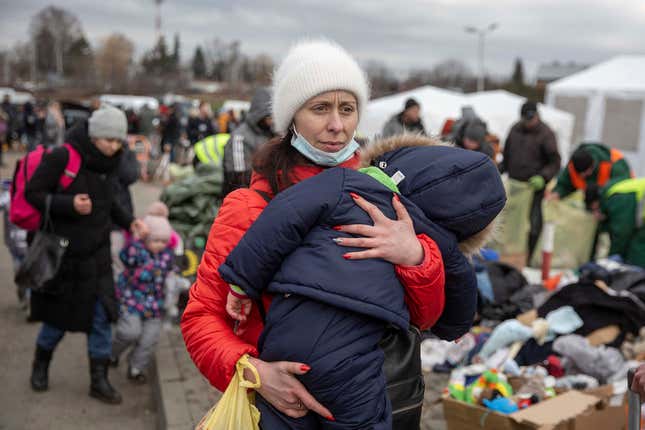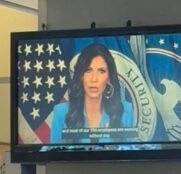What It’s Like to be a Journalist on the Frontlines in Ukraine
While documenting the destruction in her home country, reporter Oliya Scootercaster explains what many Americans aren't seeing.
EntertainmentEntertainment

As thousands of civilians continue to flee Ukraine amidst a violent invasion from Russia, those watching from afar are more reliant than ever on local reporters attempting to deliver minute-by-minute coverage, via platforms that often breed misinformation, distorted or inaccurate videos and donation scams.
With a new round of bombings in Kyiv this week and an increase in security measures, journalists — both foreign and domestic — are up against a lot while trying to document the damage from the frontlines. We spoke to one of those journalists, Oliya Scootercaster, a Ukrainian-born freelance video journalist, reporter and producer who owns and operates FNTV, a small business newswire service, about her experience thus far.
Scootercaster previously lived in New York City and has reported on both the enduring, evolving coronavirus pandemic and the Black Lives Matter movement. She recently relocated to her home country in Ukraine after hearing that there were Russian threats of violence. After arriving in Kyiv at the end of January and moving south to Donbas, Scootercaster told us that she clocked people taking preventative measures throughout her journey.
She says people told her they had gathered their documents, had prepared their “to-go bag” and even discussed options of what to do should attacks begin. One group of civilians even started practicing combat training so they could help their country and protect their families.
Just weeks later, as civilians face a reality they dreaded, Scootercaster is traveling the route many people are taking to flee. Currently, she’s in Ternopil, where Pakistani students have recently been advised to travel to enable safer evacuations. While news wire services are doing their best to widely cover what’s happening, Scootercaster says she’s working to find the stories that are falling through the cracks and give them her own unique angle. Her latest coverage includes videos of a bustling church shelter, one of many in the western Ukraine city who are providing shelter and donations to refugees, and parents attempting to flee with their young children.
“From what I’ve gathered, a lot of people are heading to Poland, but I’ve also heard that many are staying in Ukraine and just moving to cities further away, places they say are quiet and safe,” she explained, adding that most people fleeing are families, with many traveling in groups like two families together with lots of children. However, she notes she hasn’t seen a lot of elderly people traveling at all, telling her they’re not looking to leave their homes as the refugee process is extremely difficult and they’re prepared to “take their chances” staying put.
-

-

-

-

-

-

-

-

-

-

-

-

-

-

-

-

-

-

-

-

-

-

-

-

-

-

-

-

-

-

-

-

-

-

-

-

-

-

-

-








































